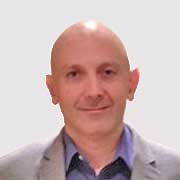How many ways can you say bean in Spanish?
Before I go any further I´d like to thank the Instituto Hemingway for providing the class and specially mention my teacher Alfredo for his suggestions, clarifications, comments, and patience.
I am Uraguayan but have lived in Italy for the last five years. For better or worse, I have always worked with Spanish, helping students at the high school or university levels, translating and arranging informal conversation exchanges. It was through this that I experienced our language from a new point of view: listening to it, reading it, using it, all for the first time. It´s difficult. A native speaker often discounts the small things unique to his language that completely throw off foreign students who, no matter the age, are facing something as strange and unexpected as a child seeing something new for the first time.
To overcome these obstacles I believe the best approach is to stress communication. This was the most important thing I realized from the course. Learning to understand the language from its utility or the meanings of words, realizing what a grammatical structure inflicts upon a phrase allows me, slightly, to see the language as a system. With a traditional linguistic education, it wasn´t difficult for me to grasp this way of thinking. Nonetheless I tremendously value the possibilities this class have given me to reflect on old lessons and try and discover new things in front of my own students.
Another important point to make is how much the Spanish language changes between countries. I´ve had to confront this challenge from the beginning, given that my own dialect, from the Plata River, has its own unique characteristics. The Spanish taught officially in the majority of private institutes in Italy is very different from the Spanish of Uruguay, Argentina, parts of Chile, and Paraguay. Things that I say naturally would likely leave an Italian student used to Castillian Spanish scratching his head. When students bombard me with questions I face another challenge: How much can I let my own speech influence theirs? As a teacher, shouldn´t I always be as flexible as possible?
Speaking with other Spanish as a Foreign Language teachers coming from different dialects has led me to a conclusion, at least for the moment: the answer lies in the students, the group and its objectives. Whether it´s teaching business Spanish to professionals, for workers going to Mexico, for a reading project in a high school or for adults who want to vacation in the south of Spain, the goals of each group are always different.
The learning process is a very complex process and a challenge for anyone finding themselves in this situation. I ask anyone who has had or is having similar experiences to comment and share their own feelings and advice. I, for one, would be very grateful!
Warm greetings to all and thanks again to Alfredo and the Instituto Hemingway



 English
English Español
Español Deutsch
Deutsch Français
Français Italiano
Italiano Ру́сский
Ру́сский 

